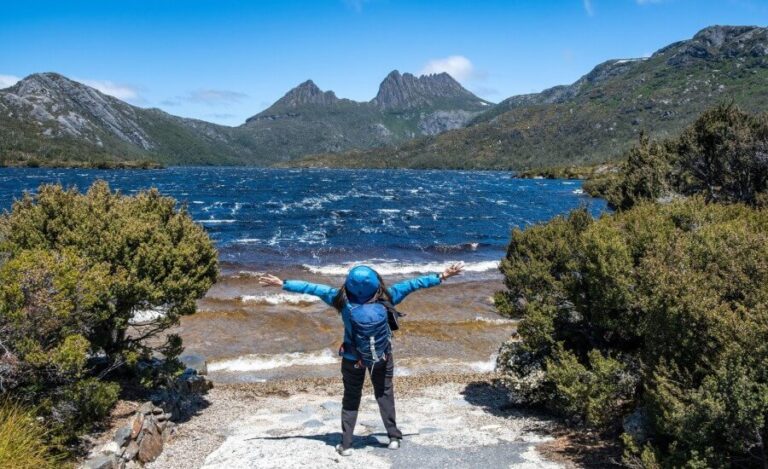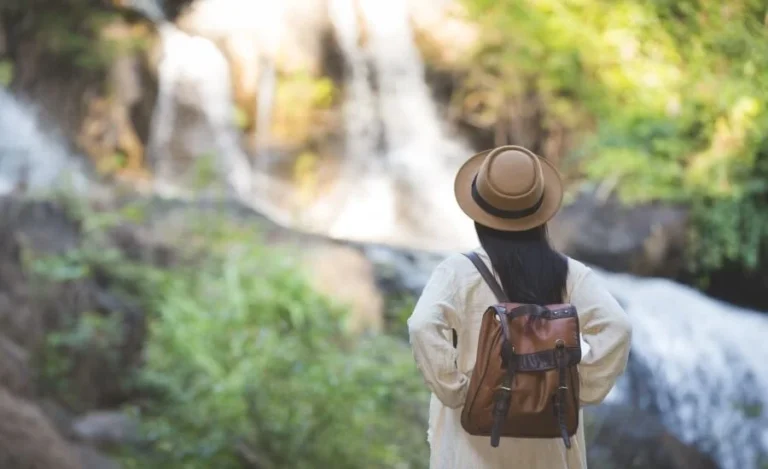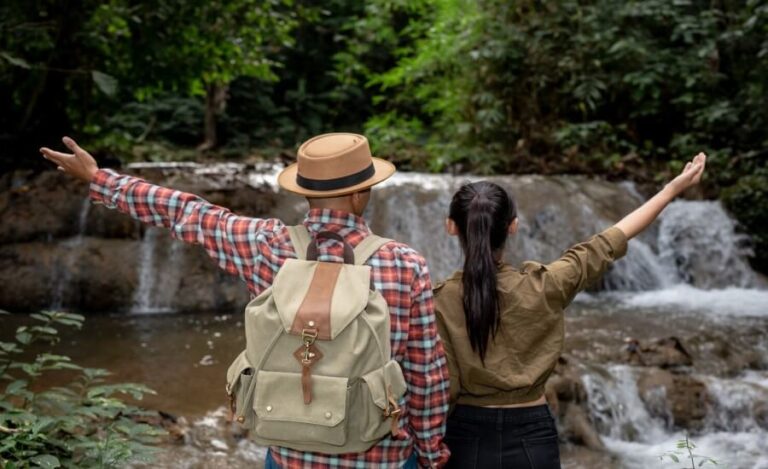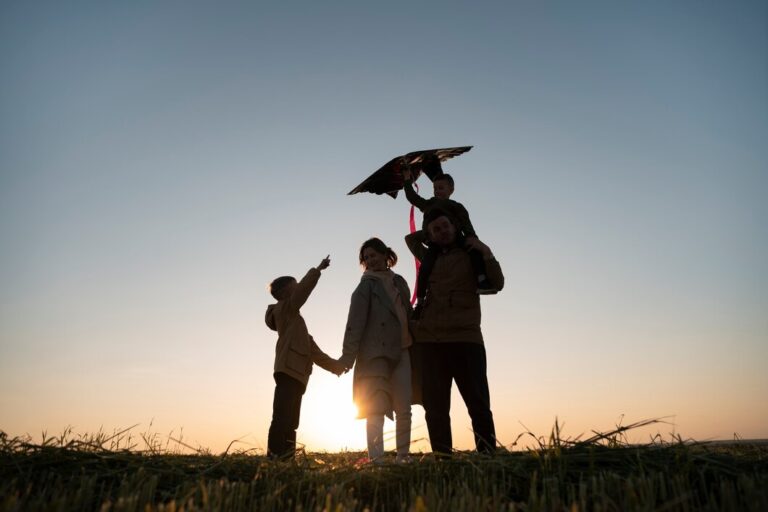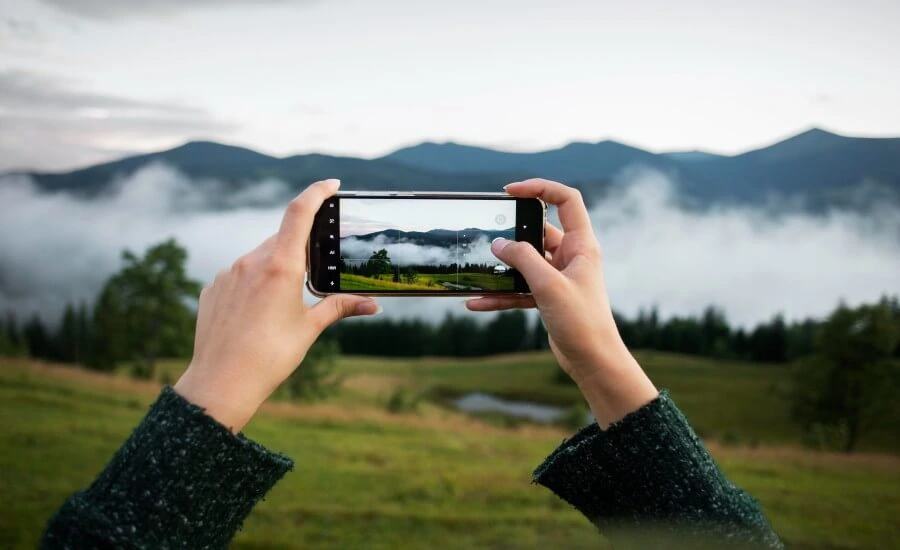
Picture this: You’re standing before a breathtaking vista – a waterfall cascading down mossy rocks, sunlight filtering through ancient trees. It’s a moment of pure magic. But instead of soaking it in, you find yourself frantically tapping your phone screen, swiping through filters, trying to capture the perfect shot. Your shoulders tense, your breath is shallow, and by the time you look up from your device, the fleeting magic feels… diminished. You have the photo, perhaps, but did you truly experience the moment? This scenario is all too common in our visually saturated world. We risk becoming so focused on documenting our lives that we forget to actually live them.
This is where mindful photography comes in – a practice not about technical perfection or accumulating thousands of images, but about using the camera as a tool to deepen our presence and appreciation. This guide explores Mindful Photography: Capturing Memories Without Missing the Moment. You’ll learn how to shift your approach from mindless snapping to intentional seeing, transforming photography from a potential distraction into a powerful practice for enhancing your connection with the world around you. Get ready to discover how taking fewer, more intentional photos can lead to richer experiences and more meaningful memories.
The Photographer’s Paradox: Capturing vs. Experiencing

There’s an inherent tension in the act of photographing our experiences. On one hand, we desire tangible mementos – visual anchors to recall precious moments, beautiful sights, and loved ones. On the other hand, the very act of raising a camera can subtly pull us out of the present, shifting our focus from being there to getting the shot. This is the photographer’s paradox.
When we approach photography reactively or compulsively, our attention splinters. Part of our mind is analyzing composition, light, and settings. Another part might already be thinking about sharing the image online – anticipating likes and comments. This leaves precious little bandwidth for simply experiencing the scene with our full senses. We start seeing the world as a series of potential photographs rather than a reality to be inhabited. Have you ever felt like you were watching a beautiful concert or family gathering primarily through your phone screen?
This constant mediation can lead to a feeling of detachment. The memory becomes tied more to the image captured than to the felt sense of the moment – the cool breeze, the sound of laughter, the feeling of awe. Furthermore, the pressure to capture everything perfectly can induce stress and anxiety, detracting from the joy and relaxation travel or special occasions are meant to provide. We end up with a hard drive full of photos but a heart that feels strangely unfulfilled, as if we were observers rather than participants in our own lives. Mindless photography prioritizes the artifact over the experience. Recognizing this paradox is the first step toward a more integrated and fulfilling approach.
What is Mindful Photography? Seeing with Intention

So, what exactly is Mindful Photography: Capturing Memories Without Missing the Moment? At its core, it’s about applying the principles of mindfulness – present moment awareness, non-judgment, and intention – to the act of taking pictures. It reframes the camera not just as a tool for documentation, but as an invitation to see more deeply and connect more fully with our subject and surroundings.
Mindful photography emphasizes the process over the outcome. While the resulting image has value, the primary focus is on the quality of attention and presence brought to the entire act – from the initial observation to the final click (and even how we review photos later). It involves consciously slowing down, engaging the senses, and making deliberate choices about what, why, and how we photograph.
Instead of reacting impulsively to something visually appealing, the mindful photographer pauses. They take a breath, observe the scene without the immediate urge to capture it, notice the light, the textures, the sounds, the feelings evoked. The decision to take a photo arises from this place of connection and appreciation, rather than habit or obligation. It’s about receiving an image rather than hunting for one, as photographer Julie DuBose suggests.
Key elements include:
- Presence: Being fully engaged in the here and now, noticing sensory details.
- Intention: Having a clear sense of why you are taking a particular photograph. What feeling or detail do you wish to convey or remember?
- Observation: Looking deeply and curiously, beyond the superficial first glance.
- Connection: Feeling a relationship with your subject, whether it’s a landscape, a person, or a small detail.
- Non-Judgment: Approaching the process and results with curiosity rather than harsh criticism. Accepting imperfection.
Ultimately, mindful photography transforms the camera from a potential barrier into a bridge, guiding our attention and helping us appreciate the beauty and intricacies of the world more profoundly. It’s about using photography to wake up to our lives.
The Mindful Advantage: Benefits Beyond the Photo

Embracing mindful photography offers rewards that extend far beyond simply creating more thoughtful images. By shifting our focus from quantity and perfection to presence and intention, we unlock a range of benefits for our overall well-being and our relationship with the world.
- Deeper Appreciation & Connection: By slowing down and truly observing before shooting, we notice details, textures, and nuances we might otherwise overlook. This fosters a deeper appreciation for the subject, whether it’s a grand landscape or the intricate pattern on a leaf. We move from passively consuming visuals to actively engaging with them.
- Enhanced Memory of the Experience: Paradoxically, taking fewer, more intentional photos often leads to stronger memories of the actual experience. Because you were more present and engaged sensorily when deciding to take the shot, the memory encoded is richer and includes more than just the visual information. You remember the feeling, the sounds, the atmosphere.
- Reduced Stress and Pressure: Mindful photography releases the pressure to capture everything perfectly or to constantly perform for an imagined audience. By focusing on the process and accepting imperfection, the act becomes less stressful and more enjoyable, aligning with the relaxing potential of creative pursuits.
- More Meaningful Photographs: When photos arise from a place of genuine connection and intention, they carry more emotional weight and meaning. They tell a story not just of what something looked like, but of what it felt like to be there. These images often resonate more deeply, both for the photographer and for viewers.
- Improved Observation Skills: The practice of mindful seeing cultivates sharper observation skills that spill over into daily life. You start noticing more beauty, interest, and detail in your everyday surroundings, even when you don’t have a camera in hand. It trains your “photographer’s eye” in the truest sense – the eye that truly sees.
- Increased Gratitude: Actively looking for things to appreciate and capture through a mindful lens naturally cultivates a sense of gratitude for the beauty and wonder present in the world, both big and small.
Think back to a time you took many photos – do you remember the experience vividly, or mostly just the photos themselves? Mindful photography aims to ensure the lived experience remains primary, enriched, rather than replaced, by the photographic act. It makes photography a tool for savoring life.
Cultivating the Mindful Eye: Practical Techniques

Shifting to a mindful photography practice involves cultivating new habits of seeing and interacting with your camera and the world. Here are some practical techniques to get you started:
Pause and Perceive: Before the Click This is the cornerstone. Before raising your camera:
- Stop: Resist the immediate urge to shoot.
- Breathe: Take a few conscious breaths to center yourself and arrive fully in the moment.
- Observe: Look at the scene with open awareness. What catches your eye? What details emerge as you look longer?
- Engage Senses: Actively notice sounds, smells, the feel of the air, your own emotional response. Let the full sensory context inform your perception.
- Form Intention: Ask yourself: Why do I want to photograph this? What specifically am I drawn to? What feeling or story do I want this image to hold?
Single-Tasking with the Camera Avoid digital multitasking, which fragments attention:
- Camera Up, Focus In: When you decide to shoot, dedicate your attention fully to composing and capturing the image intentionally.
- Camera Down, Experience Fully: Once the shot is taken (or you decide not to shoot), put the camera away (or lower it) and fully re-engage with the experience directly, without immediately reviewing the photo or thinking about the next shot.
- Avoid Chimping (Excessive Reviewing): Constantly checking the screen pulls you out of the present. Trust your process; review later.
Quality over Quantity: Shoot Less, See More Limitations can foster creativity and presence:
- Set a Shot Limit: Challenge yourself to capture an outing or scene in a small number of frames (e.g., 5 or 10 photos). This forces you to be more discerning and intentional.
- One Subject, Multiple Perspectives: Instead of snapping dozens of different things, choose one subject and explore it deeply from various angles and distances.
- Embrace “Good Enough”: Let go of the need for technical perfection in every shot. Focus on capturing the essence or feeling.
Engaging All Senses (Even While Shooting) Don’t let the visual dominate entirely:
- Listen While Looking: Remain aware of the soundscape as you compose your shot.
- Feel the Environment: Notice the temperature, breeze, or ground beneath you even as you focus through the lens. This keeps you grounded in the physical reality of the moment.
These techniques aren’t rigid rules but gentle invitations to bring more awareness and intention to your photography. Start with one or two that resonate most. Which technique feels most accessible for you to try first?
Gear Simplicity: Focusing on Vision, Not Gadgets

In a world saturated with marketing for the latest cameras, lenses, and accessories, it’s easy to believe that better gear automatically equals better photos or experiences. Mindful photography gently challenges this notion, suggesting that simplicity in equipment can actually enhance presence and creativity.
Focusing excessively on complex gear – constantly changing lenses, navigating intricate menus, worrying about technical settings – can become a major distraction, pulling your attention away from seeing and experiencing. The more straightforward your tools, the less mental energy they demand, freeing you up to connect with your subject and surroundings.
- The Power of the Smartphone: Your smartphone camera is a fantastic tool for mindful photography. It’s always with you, simple to operate, and encourages focusing on composition and light rather than technical complexities. Embrace its limitations as creative constraints.
- Basic Cameras Welcome: A simple point-and-shoot, an old film camera, or an entry-level DSLR/mirrorless used in a straightforward mode (like aperture priority or even auto) works perfectly. The key is familiarity and ease of use.
- One Lens Challenge: If using an interchangeable lens camera, try going out with just one prime lens (a lens with a fixed focal length, like a 35mm or 50mm). This forces you to “zoom with your feet,” moving your body to compose the shot and interact more physically with the space.
- Less is More: Resist the urge to carry every piece of gear you own. A lighter bag means less physical and mental burden. Choose only what is essential for your intended outing.
Mindful photography reminds us that the most important “equipment” is not the camera body or lens, but the mind and eye behind it. Technical mastery has its place, but it should serve your vision and experience, not dominate it. By simplifying your gear, you make space for what truly matters: observing the world with fresh eyes, connecting with the moment, and capturing images that reflect that presence. Can you recall a time complex gear actually hindered your enjoyment?
Common Concerns & Solutions in Mindful Photography

Adopting a mindful approach to photography can feel counterintuitive at first, especially if you’re used to snapping freely or aiming for technical perfection.
Here are some common concerns and gentle reframings:
- Concern: “If I pause and wait, I’ll miss the ‘decisive moment’ or the perfect shot!”
- Solution: Reframe your goal. Is the absolute priority to capture that fleeting instant, potentially at the cost of experiencing it? Or is it to deepen your presence and capture something meaningful from that presence? Sometimes, letting a moment pass undocumented allows you to fully receive it. Trust that the moments meant to be captured will align with your mindful attention. Perhaps the “perfect shot” is the one taken with full awareness, even if it’s different from the one you initially envisioned.
- Concern: “Focusing on my senses and feelings will make my photos technically worse (blurry, badly composed).”
- Solution: Mindful photography isn’t about ignoring technical skill, but integrating it with awareness. Initially, your technical execution might shift as you prioritize presence. However, deeper observation often leads to stronger compositions and more intentional use of light. With practice, technical aspects become more intuitive, freeing up attention. Accept a learning curve and focus on the intention behind the image over flawless execution, especially at first.
- Concern: “How do I balance genuinely wanting a photographic memory with the desire to stay present?”
- Solution: Set clear intentions. Before an event or outing, decide when and why you want to take photos. Perhaps designate specific, short periods for photography, and commit to being fully present the rest of the time. Or, set a strict shot limit (e.g., “I will take only 5 photos during this hike”). Communicate with companions if needed (“I’ll take a few shots now, then put the camera away”). It’s about conscious choice, not rigid deprivation.
- Concern: “It feels unnatural or forced to ‘try’ to be mindful while taking photos.”
- Solution: Like any mindfulness practice, it can feel effortful initially. Start small and be gentle with yourself. Don’t aim for constant, perfect mindfulness. Begin with just one technique – maybe pausing for three breaths before shooting. Approach it with curiosity, not pressure. The goal isn’t to achieve a perfect state, but to gently guide your attention back to the present whenever you notice it has wandered. It’s a practice, not a performance.
Addressing these concerns often involves a subtle shift in values – prioritizing the lived experience and the quality of attention over the quantity or technical perfection of the photographic output.
Mindful Photography Practice: Simple Exercises

Ready to try mindful photography? Here are a few simple exercises you can do anywhere, with any camera (even your phone):
- The Five-Minute Observation: Find a spot (indoors or outdoors). Set a timer for 5 minutes. Put your camera down. Simply observe your surroundings using all your senses. Notice light, shadow, shapes, textures, sounds, smells, feelings. After the timer goes off, reflect on what you noticed. Then, if you feel moved to, take one or two photos inspired by your observation.
- Theme Walk: Choose a simple theme before heading out for a short walk (e.g., “circles,” “red,” “shadows,” “texture,” “reflections”). Intentionally look only for subjects related to your theme. This narrows your focus and sharpens your observation for specific details. Take only photos related to your theme.
- Three-Shot Story: Choose a single scene or subject. Limit yourself to taking only three photographs to tell its story or capture its essence. This forces careful consideration of perspective, composition, and what’s truly important about the subject.
- Sensory Description First: Before photographing something, take 60 seconds to mentally (or physically, in a journal) describe it using purely sensory language (What do you see, hear, feel, smell?). Then, try to capture that described feeling or detail in your photograph.
- Familiar Subject, Fresh Eyes: Choose a very familiar object or scene (e.g., your coffee mug, a view from your window, a tree in your yard). Spend time looking at it as if for the first time. Explore it from unusual angles (low, high, close-up). Try to find a detail or perspective you’ve never truly noticed before, and photograph that.
- Gratitude Snaps: Dedicate a photo session (even just 10 minutes) to photographing only things you feel grateful for in that moment. They can be small (sunlight on the floor) or significant. This connects photography directly with positive emotion and appreciation.
Choose one exercise that appeals to you and try it without pressure. The goal is the process of mindful engagement, not the resulting photo. Which exercise sparks your curiosity the most?
Conclusion: Seeing the World, One Mindful Shot at a Time

Mindful Photography: Capturing Memories Without Missing the Moment offers a gentle yet profound shift in how we interact with our world through the lens. It’s an invitation to move beyond the frantic urge to document everything and instead embrace the camera as a tool for deeper seeing, connection, and presence. By prioritizing awareness over accumulation, intention over impulse, and experience over artifact, we don’t just take better photos – we live richer moments.
Imagine photography not as a barrier that separates you from reality, but as a bridge that enhances your perception. Picture yourself slowing down, breathing, truly observing the play of light, and clicking the shutter from a place of genuine appreciation, not obligation. The resulting images become more than just pixels; they become vessels holding the essence of your focused attention, tangible reminders of moments truly lived and deeply felt.
This approach liberates us from the pressure of perfection and the anxiety of missing out. It reminds us that the most valuable captures are often the internal ones – the feelings of awe, peace, connection, and gratitude cultivated through mindful observation. The photographs become secondary, beautiful byproducts of a primary commitment to being present.
Your invitation is simple: The next time you feel the urge to take a photo, pause. Take one conscious breath. Ask yourself, “What do I truly see? Why does this moment matter?” Let that awareness guide your lens. Try just one small technique from this guide. See more, shoot less, and discover the profound difference mindful photography can make – not just to your pictures, but to your life.
